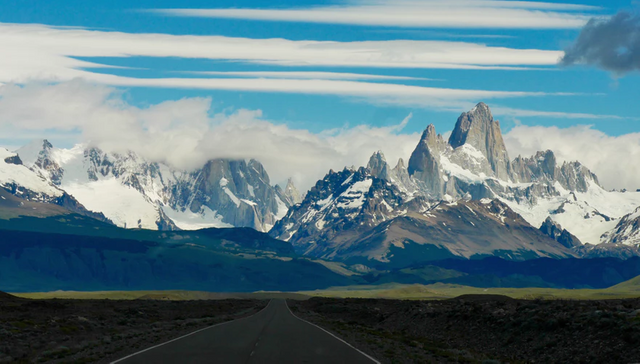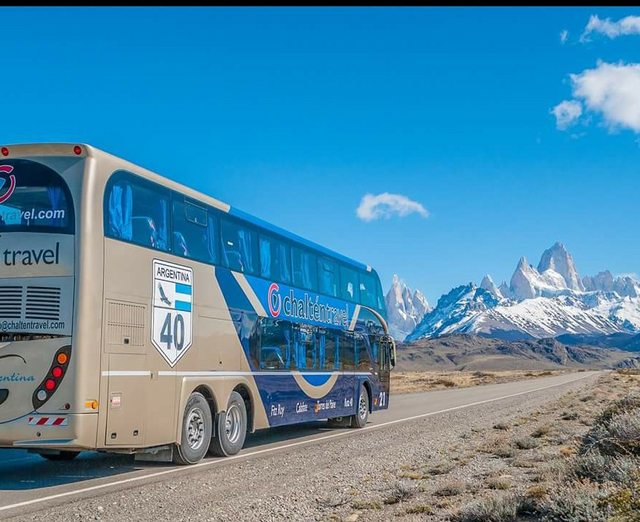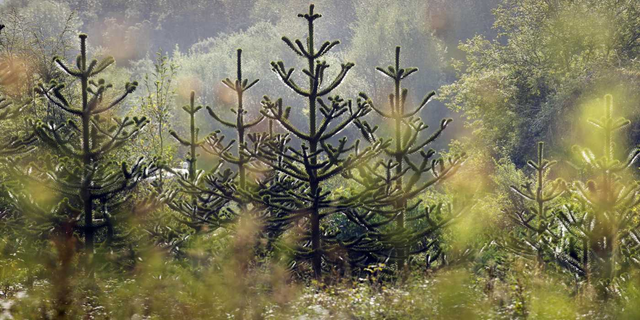Patagonia: the place where I was most impressed during all my travels.

Patagonia is an area in the extreme south of South America, which includes the south of both Chile and Argentina. The border between the two countries runs along the backbone of the Andes, the mountain range that is less high here than the Aconcagua, the Altiplano or the Peruvian Andes. Patagonia is a gigantic, vast area of more than 1 million km2 where only 2 million people live. A region for explorers, artists, climbers and adventurers.

The area has attracted explorers, artists, climbers and adventurers for centuries. Patagonia is known for its fierce wind (on the Argentinean steppe) and heavy rainfall (on the Chilean coast), although there is a moderate to cold climate with relatively mild winters and sunny summers. The area is much less southerly than most think. The southernmost city of Ushuaia is 54° Z, which in the northern hemisphere actually corresponds to northern Germany.
In terms of landscape and culture, Patagonia completely deviates from the classic South America image. No Indians in colorful robes, no extreme high mountains like in Peru and Ecuador. Patagonia is best described as a perfect mix of Norway, Iceland, Alaska, New Zealand and the Swiss Alps, but then in an epic increase in scale. There are more sheep in Patagonia than people. A lively gaucho culture completes the picture.
Trekking
A trek in Patagonia leaves the soul behind. Where wilderness is law. You will see desolate, untouched and vast landscapes with infinite golden steps from which razor-sharp granite towers rise. A northern and southern ice cap sculpt the landscape and feed gigantic azure glaciers that erode in the Pacific Ocean in the west and in gigantic lakes in the east. Hanging glaciers peer over a terrain of impenetrable rain forests. Water is still pure to drink from the many azure rivers and lakes. Walk on and around active volcanoes and let yourself be enchanted by the fairytale araucaria forests.

Hiking trails
Patagonia hosts a number of well-known national parks in both Chile and Argentina where well-documented, multi-day trekking routes can be traversed. Some of these trails have become very popular in recent years (in the main season) and attract hordes of tourists. Despite recent accidents, the law is rather arbitrary and there are very few rules. The contrast with tourism and nature policy as known in the parks of USA, Canada and New Zealand cannot be greater. For some a blessing, but for the lesser thought visitor a threat to the beautiful nature...
Ripe for exploration
Patagonia is and remains mainly unexplored territory where there is still a real pioneering spirit. 95% of foreign tourists concentrate their visit on only a few percent of the possibilities in Patagonia (just like me). Beyond the paved paths, Patagonia is a playground for wilderness enthusiasts. In high summer, week-long trips can be made where exchanging the yerba with a solitary gaucho will be your only human contact.
When to go?
In the southern hemisphere, the seasons are the opposite of those in Europe. This means that summer starts on 21 December and autumn on 21 March. During our summer vacation, it is in the middle of winter in Patagonia. If this is the only time in the year that you can travel, it certainly offers opportunities for a spectacular winter hike.
During the Christmas period, January and February (summer holidays for the Chileans and Argentines), the tourist hotspots in Southern Patagonia (Torres del Paine, Los Glaciares, Puerto Natales, El Calafate, El Chalten, Ushuaia) can be very, very busy. Trails are well-trodden and the hotels and hostels are often fully booked.

The beginning of summer is also known as unstable with impetuous and unpredictable weather as a result. Recommended periods for trekking in those areas is March and April. Less tourists and more stable autumn weather.

During the Patagonian high summer, you limit your visit to the less visited areas in northern and central Patagonia.
Is it safe there?
Patagonia is safe to very safe. Almost no one lives there and there are no really big cities. Crime is rather rare or marginal. It is actually much safer than in most modal western cities. Public transport in Chile and Argentina is also very easy to use. The luxury and comfort you will find on these long distance buses is unsurpassed in quality.

How do I get there?
You can take an intercontinental flight to Buenos Aires or Santiago de Chile. From these metropolises you can get very easy, safe and relatively cheap in the south. Keep in mind that distances are immense and of a completely different scale than in Europe. A bus ride from Buenos Aires to Bariloche in northern Patagonia takes almost 24 hours! To get to El Calafate and the famous Perito Moreno glacier, you should add another 24 hours of busses.


Northern Patagonia
The Chilean side is characterized by a temperate and very green mountain landscape with rivers, lakes, snowy (active) volcanoes. Access to the many national parks is reasonably well organized and in some parks trails have been built. Here you can find the only real Araucaria araucana. This is the well-known monkey-puzzle tree that appears in many allotments in Europe.

The more south, the greener it gets. It is not for nothing that they call this area Patagonia Verde. Welcome to the Valdivian temperate rainforest. Here the adventurer goes in search of the ancient alerce trees. They look like the giant sequoias of North America and are the second oldest living organism on our planet.

The Argentine side of Northern Patagonia is also called the lake area. Magical linga primeval forests alternate with fjord-like, finger-shaped lakes surrounded by snow-covered Andes mountain ridges and volcanoes such as the impressive Cerro Tronador. Here you will find many good trekking trails and even some welcoming cabins. Maybe you can try the Huella Andina, a waymarked, long distance (600 km) trail that passes through five national parks.

Central Patagonia
I have never been here before, but it appears to be one of the most difficult areas in Patagonia. The Argentinean side offers little for the hiker, since it only consists of a bleak steppe. Most of the possibilities are on the Chilean side of the Andes, who only reaches a height of 1500 meters here. It takes time and perseverance to get to know the secrets of this fantastic area. The coast is fragmented in fjords, canals and overgrown islands on which a human never set a foot.
Southern Patagonia
This is the mecca where most tourists come to. Here you will find the world famous and consecutive national parks of Torres del Paine (Chile) and Los Glaciares (Argentina). This area is well documented and therefore easy to travel. Rightly so! They are truly natural wonders.



View this post on TravelFeed for the best experience.
Congratulations, Your Post Has Been Added To The Steemit Worldmap!
Author link: http://steemitworldmap.com?author=keysa
Post link: http://steemitworldmap.com?post=patagonia-the-place-where-i-was-most-impressed-during-all-my-travels
Want to have your post on the map too?
Hi @keysa,
The TravelFeed.io team manually reviewed your post and we have found a copyright violation in your post.
Since it violates our policies, your post has been removed from TravelFeed.io.
To learn more about our policies, you may check them out here. Please contact us through our Discord if you wish to appeal.
It's probably because the post already appeared here on my Steemit page. I only got to know TravelFeed and wanted to share my info and pictures there too, which is probably no longer possible (which makes sense, too bad).